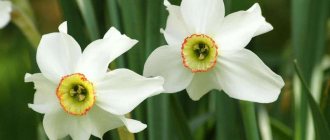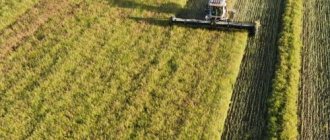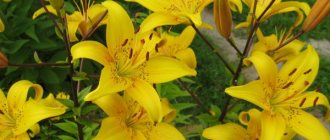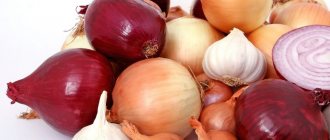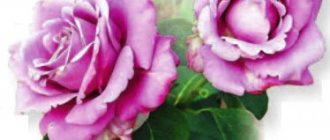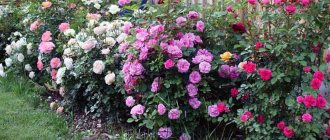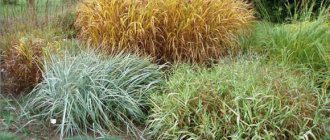What does the Crassula money tree look like and how does it bloom?
- Family: Crassulaceae (Crassulaceae).
- Homeland: South Africa. Wild species are most often found in the southern hemisphere. The Arabian Peninsula, Madagascar is the birthplace of this plant.
- What does this plant look like? Almost all types of Crassula or Crassula flower have a rather unusual appearance, so some of them (for example, Crassula capitella) are grown as indoor flowers.
The rhizome of plants is located in the upper parts of the soil. The roots are quite tender and thin. The stem at the base is thick, compacted and juicy. Further in its growth it is prone to branching. Can be erect or creeping. By correct pruning, flowers of many varieties of Crassula (Crassula ovata, Crassula arborescens) can easily form a crown.
The foliage is fleshy, round or oblong-oval in shape, sessile.
Flowering is a very rare occurrence, but even in indoor conditions the tree can produce color.
This family has more than 300 species, among them dwarf plants reaching 10 cm in height, and quite large specimens growing up to 4 m. Most of them are perennial, but there are also annuals that die after flowering.
Crassula, depending on the type and variety, can have a leaf color from dark green to yellowish. For example, Crassula argentea has silvery foliage, while Crassula ovate minor has purple tips on its leaves. It has been noticed that in a plant that is exposed to direct sunlight for a long time, the greenery can turn red.
The shape of the leaves is also varied: from scaly-like formations on the branches to large round, oval and even triangular.
The edges may be rounded or jagged. In species of Crassula that grow in particularly dry regions, grooves and cilia appear on the surface of the leaves, which help moisture not evaporate so quickly under the scorching sun.
Decorative flowering Crassula
Finally, we will introduce you to some decorative flowering varieties of Crassula, which annually delight their owners with colorful blooms.
Crescent (Falcata)
Crassula falcata
Crassula crescent is a subshrub with a straight, slightly branched stem. It reaches a height of one meter. It has sickle-shaped grey-green leaves. They are juicy, fleshy, fused at the base and clasping the stem. Their length is about 10 cm. It blooms in July - August with bright red-orange flowers, which are collected at the top of the shoot into large, up to 20 cm in diameter, umbrella inflorescences. The peculiarity of the variety is that after flowering, the top of the shoot is removed to well-developed leaves. They wait for side shoots to appear, of which one, the strongest, is left. The rest are used for propagation by cuttings.
Schmidt (Schmidtii)
Schmidt's Crassula Schmidtii
Crassula Schmidt is a ground cover variety that is most common in Europe. There it is grown as an annual, and after the bush has flowered, it is thrown away and new specimens are planted. The height of the bush is no higher than 10 cm. The plant has dense lanceolate leaves, different in shape from other species: they are narrower and pointed at the ends. The color of the leaves is remarkable. They are green on top, with a silvery coating, and slightly reddish on the inside. The stem is also greenish-pink. This Crassula blooms with red, carmine-colored flowers. The plant is distinguished by its remarkable decorative properties and is widely used by landscape designers.
Justi-Corderoyi
Crassula Justi-Corderoyi (C. Justi-Corderoyi)
This variety is also preferred to be planted in Europe as an annual. It is similar to Schmidt's Crassula. Only its leaves are flattened, rounded at the bottom, and the edges have cilia. The flowering plant produces bright carmine buds with reddish inflorescences.
Crassula perfoliata (C. perfoliata)
Crassula perfoliata
This type of Crassula also annually pleases caring gardeners with beautiful flowering. This species can reach a height of 50 to 100 cm. The stems are erect, slightly branched. The leaves, as if strung on a stem, give it a special decorative effect. They are juicy and meaty. They have a triangular or lanceolate shape. Their length is from 10 to 15 cm. The upper surface of the leaves is dotted with red dots, and their edges are covered with a number of barely noticeable, small teeth. Abundant flowering occurs in the summer months. Small flowers are collected in racemose inflorescences. Their color is white or red. A peduncle (about 10 cm) grows from the top of the stem.
Types and varieties of Crassula: photos, names and descriptions of indoor flower varieties
All types and varieties of indoor flowers called Crassula belong to large groups:
- Tree-like.
- Columnar.
- Creeping (moss-like).
The former are plants with fully or partially lignified stems that lend themselves well to crown formation.
These include such types of Crassula flowers as Crassula ovata, Crassula arborescens , which are quite large in size, but can be easily formed into bonsai trees.
One of the most common crassulas of the tree group is the species Crassula ovata - the so-called money tree.
This is what is most often found on the window sills of houses, apartments, and offices. It looks like a bush up to 100 cm high; its stem becomes woody as it grows.
Below is a description of some varieties of the Crassula ovata species:
'Crosby's Compact' has thick, ovate leaves that are green with a red edge.
'Hummel's Sunset' is distinguished by the presence of yellow stripes on the foliage. This variety is more similar in shape to a tree.
"Tricolor" is a bright representative of Crassula ovata with a tricolor leaf shade, where green is combined with white stripes and a red border at the tips.
“Coral” is a variety that got its name due to the unusual shape of the leaf, which has an external resemblance to these sea inhabitants.
An interesting representative of the home indoor flower Crassula is the species Crassula arborescens , which differs in larger size from the species Crassula ovata and can reach 150 cm in height.
It is not grown as often indoors, as it requires more careful care. But among the varieties of the species Crassula arborescens, we can also distinguish those that are used in home gardening.
The curly variety (Crassula arborescens curviflora) has a trunk and crown that is very reminiscent of parts of a tree; it differs from the above varieties of Crassula ovata in its leaf blade. It is thinner, light green with a reddish edge at the end. The leaf edges are slightly wavy, which gives the plant a decorative appearance.
The variety of undulatifolia is also considered very similar to the curly crassula, but its foliage has a bluish color, and its edge is not wavy, but seems to be slightly wrinkled.
See what the considered varieties and varieties of the above types of indoor tree-like crassulas or money trees look like in the photo:
The columnar group is plants that do not form branches during their growth. Several shoots immediately extend from the root, and the leaves seem to envelop the stem.
A classic example is the hybrid variety "Buddha Temple" .
Prominent representatives of the columnar group of crassulas are the varieties discussed below.
Group (Crassula socialis): characterized by a medium-sized trunk, leaves growing together in pairs, having a triangular shape, reddish-green in color with cilia at the end.
Broadleaf (Crassula rupestris): has large shoots with leaves. The latter are diamond-shaped, tightly located to the trunk, smooth, dense.
Perforata (Crassula perforata): a variety with erect stems that are covered with small, fleshy, triangular-shaped leaves with a bluish color and interspersed with a whiter, darker green or red hue.
Creeping (moss-like) - a group of herbaceous Crassulas. These are plants that very quickly fill the space allotted to them.
Look at the Crassula lycopodioides species in the photo:
The names of some forms fully convey their external characteristics, for example:
- Hairy.
- Pseudoplauniform.
- Spot.
Pubescent or woolly got its name because of the silvery hair that covers the entire plant, from the root collar to the flowers. It grows as a very small shrub that spreads along the ground.
False-moss is one of the forms of the species Crassula lycopodioides, which is distinguished by its curved stems, and its leaves are not so tightly pressed to it and can have a variety of colors (yellow, silver), which depends on the variety.
Crassula picturata is a species of creeping crassula, which is considered highly decorative, characterized by rosettes of fleshy leaves completely covered with reddish dots.
It is quite difficult to list all the types, varieties, shapes and varieties of flowers of the crassula or money tree; many have changed in the process of selection work and outwardly no longer resemble the familiar and well-known “inhabitants” of apartment window sills.
Tree Crassula
Because of its leaves that look like coins, the tree-like Crassula is called differently in different countries: “Silver Tree”, “Silver Dollar”, “Coin Tree”, “Tree of Happiness”. The following names have stuck with us: “Money Tree” or Crassula.
This group includes the most popular types of Crassula due to their unpretentiousness and spectacular appearance. Grown as bonsai, mini-trees with a beautiful crown and thick fleshy stem can decorate the interior of any room.
Here are the most common tree-like varieties of Crassula (Crassula, Money tree) in indoor floriculture:
Oval or Ovata (Ovata)
Crassula Ovata
Ovata is the most unpretentious, shade-tolerant and, therefore, the most common variety of Crassula in amateur floriculture. She is originally from South Africa. The height of the tree varies from 60 cm to one meter. Its woody stem is highly branched. Over time, it turns brown. Evergreen glossy, often with reddish edges, leaves grow without petioles, in the shape of an ellipse. They are up to 5 cm long and up to 2.5 cm wide. The underside of the leaves has a reddish tint. Thick, numerous leaves are capable of retaining large amounts of moisture. An adult plant blooms in autumn-winter. Small star-shaped flowers are white and pink in color. Ovata can withstand temperature drops of up to 10 degrees, even short-term mild frosts do not bother it.
This may be interesting: Lithops - care and maintenance of living stones
Purslane (Portulacea)
Crassula Portulacea
Crassula Portulaca is a variety of Ovata and is similar to it in many ways. Also a very common species in home gardening. It is distinguished by the presence of aerial roots on the trunk and branches, initially white, and darkening over time. It blooms only in adulthood and not always. Its small flowers are collected in paniculate inflorescences. The color of the petals is white and pink.
Silver (Argentea)
Silver Crassula (Crassula Argentea)
Another variety of Ovata. It differs in that the green surface of the leaf blades is covered with light specks. And the leaves have a silver shine.
Ovata Minor
Crassula Ovata Minor
This is a compact form. Its variety “Crosby's Compact” is much smaller in size than the natural variety. The young plant has a fleshy green trunk that becomes woody over time. The oblong small dark green leaves have a red edge along the edges. Their size does not exceed 1.5 cm in length and 1 cm in width. The flower grows slowly and looks great in mini-gardens.
Ovata var. Oblique
Crassula Ovata var. Oblique
This is a less common form of Ovate. It is distinguished by pointed leaves with a slightly raised tip and slightly curved down sides. The leaves are slightly larger than those of Ovata.
Ovata var. Oblique cv. Tricolor and Ovata var. Oblique cv. Solana.
Crassula ovata var. Oblique cv. Solana
These hybrids are a variety of Crassula obliqua. The tricolor has white stripes against a background of bright red trim. Solana leaves are decorated with bright yellow stripes that are arranged asymmetrically. Their number varies among different shoots. On some leaves, there are no chlorophyll-free areas at all. We recommend removing completely green shoots so that the flower does not lose its diversity and decorativeness.
Milky (Lactea)
Milky Crassula (Crassula Lactea)
This is a fairly large subshrub (up to 60 cm) with fairly large leaves decorated with white dots along the edges. And the Milk Crassula blooms with thick white panicles. Hence the name of the species.
The Hobbit and Gollum
Crassula the Hobbit
Crassula Gollum
These hybrids were obtained by US breeders in the 70s of the last century from crossing Crassula Ovata and Milky. They are similar to each other. They have an original leaf shape. The Hobbit's leaves are turned outward and fused from the base to the middle, while Gollum's leaves are completely curled into a tube with funnel-shaped flaring tips. The growth pattern and size of the tree are the same as those of the common species Crassula Ovata, only their trunks are even more branched. Hybrids are very decorative and suitable for creating bonsai. They have several variegated forms.
Ovata cv. Hummel's Sunset
Crassula ovata cv. Hummel's Sunset
This hybrid has leaves decorated with white or yellow stripes and a pronounced red border along the edge. The Dutch variety of Ovata, purchased under this name, with very beautiful yellow-red leaves, may disappoint you, since the color of the leaves retains its original color only under constant bright light, which can be organized in greenhouses, but at home, usually, the leaves become just green .
Arborescens
Crassula Arborescens
This large tree, up to 1.5 m in height, has almost round leaves (7 cm long and 5 cm wide). The color of the leaves is bluish-gray, along the edge there is a narrow red border. The underside of the leaves is reddish. The leaf blades are often covered with dark specks. The flower is very decorative, in appearance it resembles Crassula Ovata, but is more demanding in care - it loves good lighting and does not tolerate waterlogging of the roots at all. At home, it rarely blooms with small white flowers. A miracle can happen if you guess the location of the pot (the western side of the apartment is preferable to others), lighting and watering. But even without flowers, the decoration of the flower is its juicy, fleshy, glossy leaves.
How to make Crassula bloom at home: basic growing conditions
Crassula or Crassula is a tropical plant, therefore some aspects of caring for it will be such as to bring the conditions as close as possible to those native to the flower. It is important to remember that the period of active growth is spring and summer, and autumn and winter are a time of rest and slowdown of all life processes in the plant.
Before planting a crassula or money tree, choose the right pot: it should have holes in the bottom where excess water will drain.
The main condition for growing a light-loving fat plant is to provide it with a bright, sunny place, but without exposure to direct midday sun. To create such conditions, in summer the flower is exposed to the air in a place protected from rain and not in the sun.
When growing in an apartment, a south-eastern window sill would be ideal, where the plant will have enough light with a minimum amount of direct sunlight. Here it can stand for the entire period of its active growth.
But for the winter you can safely move it to the windowsill of a south window. During this period, the sunlight will not be as intense. It has been noticed that the plant gives its color faster if it is provided with shorter daylight hours. This is one of the ways to make Crassula bloom faster at home.
Temperature: room temperature, in winter it requires coolness (about +10 °C), which will help the plant survive the dormant period. If it is not possible to create such conditions during the cold season, then place the flower away from heating appliances. Otherwise, it will begin to stretch out in growth, and also sprout very small leaves.
In summer, the ideal ambient temperature will be from +20 to +25°C. Try to ensure that the plant is not exposed to drafts during the period of active growth. After all, this is one of the factors why the leaves of the Crassula flower turn yellow and fall off.
Air humidity: does not matter.
Substrate: flower soil mixture with 1/3 sand and 1/3 loam. Drainage must be laid as the bottom layer. It is better to use expanded clay for this, which absorbs excess moisture well.
Watering: economical; In winter, keep the substrate almost dry. Moisturizing the crassula (money tree) is an important step in caring for the plant at home. You can’t overwater it – this is a sure way to rotting of the root system and shedding of leaves.
Humidification should be carried out only with settled water, the temperature of which will reach room temperature. If the plant is in the sun, the top soil in the pot will dry out quickly, but the lower layers may remain quite moist.
This must be taken into account when caring for a flower. The easiest way to understand when to moisten the soil is to check the top layer. If it has dried 3-4 cm deep, then it’s time to water it.
The first indicator that the soil is waterlogged and the plant is suffering from excess moisture is the shedding of leaves. It is these changes in Crassula that indicate the beginning of rotting of the root system.
Spraying is a necessary element in plant care. It is appropriate to carry it out on hot days or when the flower comes into contact with heating devices. Sometimes Crassula can be given a warm shower. If this cannot be done, then during the process of growing and caring for the fat plant, provide periodic spraying with a spray bottle.
Before showering the plant, first wrap the pot in polyethylene to prevent excess moisture from getting into the soil. The money tree can be taken out into the sun only after the water has drained from it.
Fertilizing: in the summer, apply fertilizer for cacti every 2 weeks. But during the rest period, it is enough to add excipients once every three months. Do this the day after watering, this way you will protect the root system from getting burned.
Types of Crassula, description, characteristics and photos
Most varieties of Crassula flower, but when grown in unnatural conditions this is quite a rare occurrence. The leaves of the plant secrete biocomponents that have a positive, bactericidal effect on the human body. It is worth remembering that the juice of the leaves contains arsenic; you should not taste them.
Many people believe that Crassula creates a positive aura around itself, gives a good mood and clears thoughts. The house in which the fat plant is grown will always be filled with happiness and good luck. The name we are used to - money tree - comes from the coin-shaped leaves of some species.
How to trim a fat plant at home and how to pinch it to form a crown (with video)
The version that the money tree does not require pinching is not true. In apartment conditions, the plant often branches little; branches and shoots are formed quite long and thin. Another problem with growing indoors is that the stems do not always have time to become woody; under the weight of the leaves they tend to the bottom and can easily break off.
To prevent this from happening, you need to know how to prune Crassula or Crassula correctly, and carry out the procedure as necessary. In addition, pinching makes it possible to shape the crown of the plant, which will have a beneficial effect on its external decorative characteristics.
The most common form of Crassula in apartments is wood. It is important that there is only one sprout in one pot. If this rule is not followed, then over time during the development of the plant you will end up not with trees, but with thickets. In such conditions, the flower stretches upward, branches poorly, and the shoots do not allow each other to develop normally.
In order for your Crassula to grow correctly, you need to know how to form a crown. To perform the pinching procedure, wait until the branch has at least 4 pairs of leaves. As soon as a bud appears in front of the last pair, remove it with tweezers or your fingernail. This must be done very carefully so as not to damage the last couple of sheets.
Over time, new buds will appear in greater numbers at the pinching site - these are the first signs that the plant has begun to branch. Remember these basic steps on how to properly pinch a Crassula plant. It is rare, but it still happens that one unnecessary process subsequently grows, and it should be removed immediately.
It is not advisable to pinch below the 4th pair of leaves - this will lead to the formation of an irregular crown. It is this distance that is guaranteed to ensure the correct shape for your money tree in the future.
If you want to form a crown on an overgrown tree, then it is important to know how to properly prune a crassula at home. Pinching an incorrectly formed adult plant will not produce results. Break off or cut off the top part of the stem, and sprinkle the cut areas with ash. Over time, the “wounds” will heal, and new buds will begin to grow in the axils of the old leaves. After 4 pairs of leaves appear, pluck the young shoots.
For more details on how to trim a fat plant, see the video below:
It may take more than one year to form the correct crown of an adult Crassula. The flower grows quite slowly, so be patient. You should not prune in the first months after transferring the plant to a new pot - this can lead to disease and wilting of the fat plant. Give it time to take root in the new soil and you can carry out the formation.
Columnar Crassula
An extensive species of Crassula with a unique and unusual structure of stems that resemble columns in appearance. The thickened leaves seem to be strung on a thin, transparent thread. In fact, the leaves grow together at their bases, tightly enveloping the thin stem. Most often, columnar crassulas are used in decorating areas, to decorate alpine hills or stone gardens. The plant is unpretentious, it creates very beautiful curtains and fits well into all kinds of compositions.
Perforate
A low, rather neat plant with diamond-shaped, paired leaves covering the stem, they are arranged crosswise. The trunk is hard and weakly branched. The maximum height of the bush is 20 cm, the diameter of the stem with leaves is about 3 cm.
The main variety is decorated with green leaves with a thick bluish-gray bloom and a dark red, uniform stripe along the edge. There are varieties in which yellow stripes are observed on the plates, and as the plant grows, the lines become dark green. The variety is also referred to as Crassula perforatum.
Rock
Another name is broadleaf crassula. Tall (up to 60 cm) variety with creeping or erect branches. The leaves are arranged crosswise, they are diamond-shaped, dense with a smooth surface, the color is grayish in the middle and green along the edges. The upper side of the leaves, under certain conditions, may be covered with thin red lines.
Group
In catalogs, the variety is sometimes labeled as collected crassula. A low, less often medium-sized plant with thin and fragile, highly branched stems. The branches are densely covered with leaf rosettes. The bush grows very rapidly, creating a dense, fluffy cushion. The leaves are miniature, rounded or slightly elongated, smooth, green with a silvery-gray tint. Along the edge, the flat leaves are edged with a thin red stripe and decorated with small, soft fibers.
Deceptor
A small bush (up to 15 cm in height) with tightly seated, very thick, keeled, triangular leaves, which are arranged scaly on the stem. The plate is gray-green with a powdery surface. In winter, the variety blooms with pinkish, fragrant flowers collected in loose umbels. Deceptive Crassula is another name for the variety.
Money Tree
That same indoor plant, the shape of which resembles a tree. The trunk in the lower part becomes covered with a thin crust with age, which is why the similarity only increases. The stem is greenish-brown and has characteristic stripes that appear as a result of falling leaves. Young and old shoots are decorated with thick, dark green, round-oval leaves. Rarely, the back side of the plate may become covered with a blurred reddish tint.
The variety blooms with delicate white or slightly lilac small flowers in thick umbels. An interesting feature is that pairs of leaves grow at right angles to the previous ones.
Hemispherical Crassula
Widely known as Crassula hemispherica. A single, sparsely branched small stem (up to 15 cm in diameter) with tightly seated, oval or elliptical leaves. The rosettes are semicircular, formed by curved, cross-shaped, grayish-brown leaves stacked on top of each other. From the outside, the plant looks very unusual; it develops slowly. The flowers in sparse spherical inflorescences are small, the petals are white with a thin, reddish edging.
How to care for a Crassula flower (money tree) at home after transplantation
When growing Crassula or money tree flowers, owners are interested in how to care for the plant and what to do if traces of rotting are noticed during the handling process. The first thing that needs to be done is to clear such places. This is done by removing rotten areas with a sharp knife and drying the plant for 24 hours. After this, you can plant the specimen in a prepared new pot with soil.
Be careful when handling the plant as it is very fragile and delicate.
Crassula requires special care at home and after transplantation, and one of the important points will be to protect the plant from active sunlight. To do this, the first weeks after transshipment the plant should be kept in partial shade.
Important! When outdoors, protect from sunburn. Watering is reduced to almost a minimum and is carried out only when the top layers of soil dry to a depth of 3-4 cm.
Do not forget about spraying Crassula, which should be carried out no earlier than 2 weeks after the procedure. The first feeding is no earlier than after 1.5 months.
Healing properties of money tree
The medicinal properties of Crassula are widely considered in traditional medicine. The healing power of the plant is the juice from the fleshy leaves. An equally useful houseplant is Kalanchoe.
One of the main priorities of a home healer is the ability to fight viruses and microbes in the room and purify the air in it. The medicinal properties of Crassula have a wide range of anti-inflammatory, regenerative and antifungal effects. This allows you to effectively treat many diseases with the help of Crassula “mix”. These are varicose veins, joint diseases: arthrosis, gout, arthritis. When used externally, the leaves can be cured of calluses, herpes, hemorrhoids and insect bites.
Crassula photo you can see it by getting acquainted with the varieties of this charming and amazing flower.
How to propagate Crassula (money tree) at home
Reproduction: apical cuttings, leaves - these are the most effective types of plant reproduction. It is also possible to produce seeds, but it does not retain the maternal properties of the fat plant, and is quite complex and labor-intensive. Therefore, the use of the vegetative method is considered the most acceptable at home.
Reproduction of the fat plant by apical cuttings gives almost 100% results, while preserving all the features of the mother tree, and the rooting process can take place in two ways: in water or in soil.
First you need to separate the planting material from the adult plant. Inspect and find a well-developed shoot on the bush, approximately 10-12 cm in size. Separate it from the plant with a sharp knife, remove the lower leaves and leave to wither for 24 hours.
If rooting is carried out in water, then the shoot is lowered into a container of water, to which any drug has been added to enhance the development of the root system, for example “Kornevin”. Try to install the planting material so that it does not drown in the liquid.
Leave the container with the sprout in partial shade, out of direct sunlight. The first roots will appear in the 2-3rd week. The young plant is ready to be planted in the ground. You already know how to transplant an adult fat plant at home; the same principles apply to planting a plant after the roots have appeared. Prepare a small pot, put drainage in the bottom, and fill it halfway with soil.
Place the planting material and cover it with the remaining soil. Make sure that the soil does not touch the leaves, but only covers the area where the roots have appeared. Moisten the soil and leave in partial shade for 2-3 weeks.
Rooting of cuttings can be carried out directly into prepared soil. This is done in the following steps. Prepare the pots: wash the old ones with soap under running water, and soak the new ones in boiling water.
This will help prevent pathogenic bacteria from entering the new soil and protect the fat plant from transmitting diseases and pests, such as mites, scale insects, fungal or bacterial bacteriosis, etc.
Choose pots that are small in height but wide enough. There must be holes at the bottom of the container.
Lay out the drainage and fill the pot halfway with soil. In the prepared soil, use your finger or pencil to make a small depression and place the planting material there. Add soil, not reaching the edge of the pot by 2 cm, do not compact it.
The soil can be purchased at any flower shop (for cacti or universal), or you can prepare it yourself using garden soil and sand (1:1).
general description
Crassula is a large genus of leafy succulents, most of which originate from the arid regions of South Africa. About 20 species are found in Australia, Tasmania, and other parts of the world.
Among the fat plants there are tree-like plants - with a trunk that hardens over time and a clearly defined crown; they are called money trees. But this is only a small part - the species and varieties are diverse, they can spread along the ground, form basal rosettes, rise above the ground to a small height and have no branches.
To survive in extreme conditions, stems and leaves sometimes take on bizarre shapes. Only specialists can understand the varieties of Crassula; amateurs can only determine the identity of the plants from photos with names.
But there are signs common to all species of the genus Crassula:
- thick leaves and shoots that store water for survival during dry periods;
- dense, shiny epidermis that prevents moisture transpiration;
- in the vast majority of varieties, the plates appear in pairs and are located oppositely;
- flowers are small, star-shaped;
- weak fibrous root.
Nurseries and greenhouses in Europe grow about 50 species of Crassula. But it is impossible to determine how many there are in the culture.
Cuttings from exotic countries are sent by mail and brought by tourists. They take root well, even if the stem is reduced to the state of a rag, they reproduce easily, and quickly disperse into cactus collections.
How to grow crassula at home after propagation by cuttings or leaves
You need to know a few rules on how to properly grow crassula at home from cuttings so that rooting is successful. Provide the sprout with protection from direct sunlight. Watering should be moderate and only when the top layer of soil dries out. Water should be given to the plant at room temperature and poured over the edge of the pot. Excessive watering will lead to rotting of the cuttings, so it is better not to overdo it.
And most importantly, in the first year the location of the cutting, which is undergoing the rooting process, cannot be changed. After 12 months, you can safely transfer the young plant to a permanent place in a new, larger pot.
If you are faced with the question of how you can propagate the crassula leaf at home, then this process can also be carried out in the two above methods: in water with the addition of a root growth accelerator or in a prepared soil mixture.
First you need to separate good planting material from the mother plant. Carefully examine the Crassula and find a well-developed leaf (choose among the lower ones). Separate it with a sharp knife and leave for a day.
When rooting with water, you should select a suitable container in which you can conveniently place the planting material. It should be immersed in liquid by 0.5 cm. Leave the leaf in a warm and bright place (without direct sunlight).
Reproduction of the Crassula in water by leaves occurs quickly. The first roots are visible already at 3 weeks. The finished planting material is planted in a shallow container for a month so that the root system continues to grow. After this time, the leaf with a more developed root can be moved to a pot 5-7 cm high. Within one year, the first stems should appear, after which the young plant can be transferred to a looser container.
Leaf rooting in the soil occurs according to a different principle. To begin, prepare a soil mixture in a bowl of peat, sand and moss (2:2:1), which is moistened with water and any root growth enhancer. It is very important not to overdo it with the liquid, otherwise the leaf will simply rot.
Dig the planting material approximately 1/3 into the substrate. Cover with a glass to create the necessary microclimate for the Crassula leaf or money tree.
The basic rule that tells you how to propagate Crassula without rotting the planting material is to moisten it in a timely manner using a spray bottle when the upper layers of the soil dry out. After about 3 weeks, the leaf will take root. And then you should follow the recommendations for replanting, as with rooting in water.
Where did this name come from?
Crassula is a plant native to Madagascar. This is a deciduous ornamental tree, some species of which can bloom, although this happens extremely rarely at home. Considering the climate of this plant’s homeland, it can be left without watering for a long time. A sufficient amount of moisture collects in the leaves of the fat plant, which helps the plant “survive” without watering.
Many people know this plant as money tree . Why money? Crassula leaves strongly resemble coins, hence the name. This is what made Crassula a “bait” of wealth.
Minor grade money tree seedlings
Many housewives firmly believe that a fat woman placed according to Feng Shui can attract wealth and prosperity to the house. The pot with the flower should be placed on the eastern or southern window, and its branch should be tied with a red ribbon. According to legend, it is in the fleshy leaves that all the wealth accumulates, and the more branches, the more leaves on the tree, the richer the house becomes.
Crassula propagation
Propagating this plant is very simple and is within the power of every novice gardener . There are three ways to propagate a money tree: cuttings, using leaves or seeds. How exactly does this happen? Let's try to figure it out.
Cutting method
If you don’t want to buy a plant, but the money tree fits very well into your interior, you can simply steal a few cuttings from someone. If you approach the issue correctly, you will soon have your own fat woman.
How the process works:
- Cut cuttings need to be dried
- Select a container with soil in advance. Don't forget drainage
- To make it easier for the plant to take root, you can cover it with a disposable cup, making a kind of greenhouse
- These cups need to be removed 2 times a day for 5-10 minutes to ventilate the plant.
Crassula cuttings in a glass of water, which have already taken root and are ready for planting
Each cutting needs a separate glass. They need to be removed when the cuttings are well rooted. The plant should be replanted into a pot only after its roots have entwined the soil.
Sheet method
Reproduction by leaves is more common than by root propagation, and the process itself is a little simpler.
To propagate Crassula in this way you need:
- Take a little water into a plastic cup or glass and add charcoal to it. After this, put a leaf in a glass and place the container in a dark place.
- Once every couple of days, the water needs to be changed to fresh. Repeat the procedure until roots appear
- When thin threads of roots have appeared, you need to wait a couple of days. Until they get stronger. After this, plant the sprout in the ground. The process must be carried out as carefully as possible so as not to damage the young roots, otherwise the money tree may not take root.
The leaf of the money tree, fixed in the soil, has already sprouted
Using seeds
Germinating Crassula seeds is not an easy task. This will require a lot of effort and time, but the result of the work will please everyone.
- You need to prepare special soil. Mix leaf soil and sand in a ratio of 2:1
- The seeds are placed in the ground and the container is covered with cling film. Every morning the film must be removed to ventilate the plant. Spend 5-10 minutes on this. In addition, you need to spray the soil with water using a spray bottle.
- As a rule, the first shoots appear after 2 weeks. Then you need to remove the film, but also spray the plants every morning
- When the sprouts are more or less strengthened, they need to be transplanted into another box, not very deep. It is important to maintain a distance between them of at least 1 cm
- After the fat plant has become a little stronger, it is planted in a separate pot.
Don't know how to pinch fat mushrooms?
Everything is very simple. When a new bud begins to form on the top of the head, between the last two leaves, it must be carefully removed with tweezers.
After this, two buds will begin to form at once, which means two branches will begin to grow at once.
It happens that after this procedure one kidney begins to form again, this is not scary, you just need to repeat the procedure. If you want to create a symmetrical tree, then the plant pot needs to be rotated from time to time so that all sides receive the same amount of sunlight.
How to transplant a Crassula correctly
The plant needs to be replanted once every two years, but not more often, because this plant grows for a long time. Spring is the best time of year for this. But it is important to carry out the replanting process correctly, and to do this, just follow the following instructions:
- At the bottom of the pot you need to make a drainage of 2 cm. After this, the pot is filled 1/4 with substrate. According to legend, in order to attract money and positive energy into the house, you need to put a couple of coins at the bottom of the pot, but this is purely optional
- The plant must be carefully removed from the old flowerpot, while holding it by the main trunk. The soil from the roots needs to be shaken off and the money tree placed in a new flowerpot. After this, we fill in the soil.
The process of clearing the roots of old soil during replanting
The soil should settle on its own; there is no need to trample it down immediately after replanting. The soil is then added as needed.
- The last stage is to water the plant. After replanting, the soil in the pot needs to be loosened from time to time so that oxygen can penetrate to the roots. And, accordingly, water it
Fertilizers for Crassula
Crassula, especially at the beginning of its development, needs to be fed with various vitamins and fertilizers. Fertilizers intended for cacti are excellent for feeding the fat plant. Fertilizers can be either liquid or granular, it doesn’t matter.
As a rule, Crassula requires low concentration fertilizers, but this largely depends on the soil in the flowerpot. If the soil contains organic matter, you need to use half the required dose; for mineral soil, the dose indicated on the package.
During the intensive growth of an adult tree, it must be regularly fed once a month with low concentration fertilizers
Fertilizers are added to the soil from early spring to mid-autumn. Since November, the fat woman does not need feeding.
